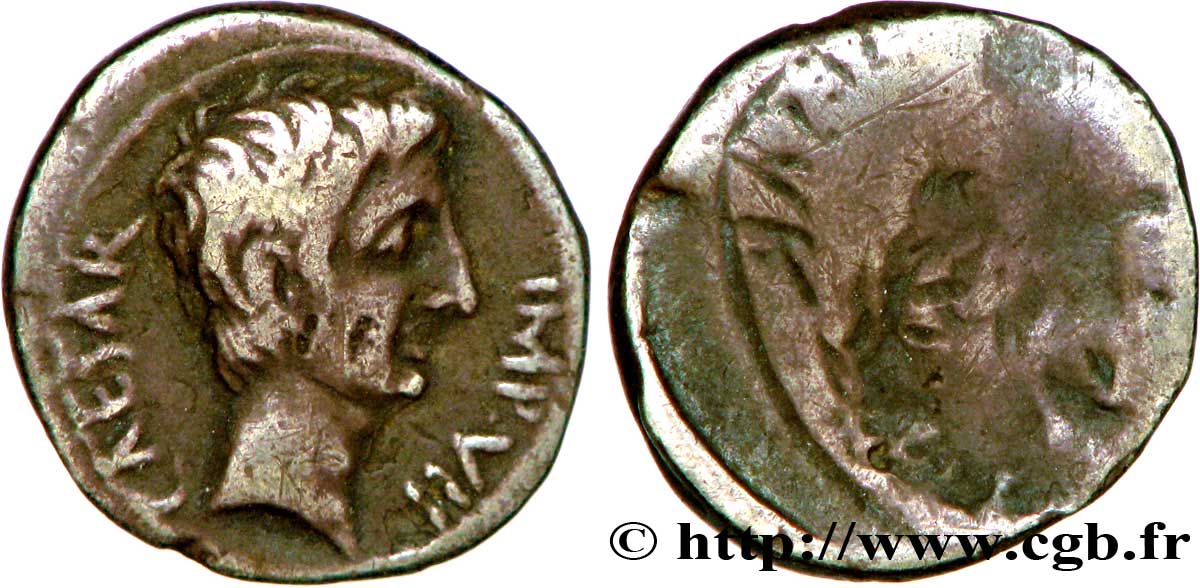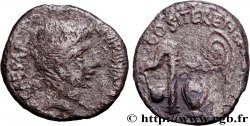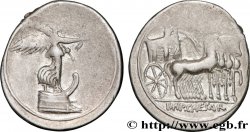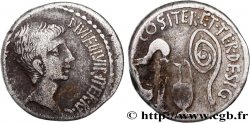v55_0101 - OTTAVIANO Quinaire
MONNAIES 55 (2012)
Prezzo di inizio : 175.00 €
Valutazione : 280.00 €
Prezzo realizzato : 175.00 €
Prezzo di inizio : 175.00 €
Valutazione : 280.00 €
Prezzo realizzato : 175.00 €
Tipo : Quinaire
Data: 29 AC.
Nome della officina / città: Asie, Éphèse
Metallo : argento
Titolo in millesimi : 950 ‰
Diametro : 14,5 mm
Peso : 1,58 g.
Grado di rarità : R2
Commenti sullo stato di conservazione:
Exemplaire sur un petit flan bien centré. Beau portrait d’Octave au droit, bien venu à la frappe, de style fin. Trace de frappe brouillée incuse au revers. Belle patine de collection ancienne avec des reflets gris foncé
N° nelle opere di riferimento :
C.14 (4f.) - RIC.276 - BMC/RE.647 - BN/R.901 - RCV.1568 (400$) - BMC/RR.240 (East) - CRI.429 - RSC.14 - MRK.2 /5
Diritto
Titolatura diritto : CAESAR - IMP VII.
Descrittivo diritto : Tête nue d’Octave à droite (O°).
Traduzione diritto : “Cæsar Imperator Septimum”, (César revêtu de la septième acclamation impériale).
Rovescio
Titolatura rovescio : INCUS.
Commento
Poids très léger. L’attribution de ce quinaire est controversée. C. H. V. Sutherland (RIC. 276) le donne à l’atelier de Rome ou de Brindisium frappé entre 29 et 27 avant J.-C. alors que J.-B. Giard le donne à l’atelier d’Éphèse (BN/R., p. 44, pl. XXXV, n° 899) en août 29 avant J.-C. Le style fait néanmoins penser à un atelier oriental. Petite contremarque sur la joue. Les quinaires incus semblent beaucoup plus rares.
Very light weight. The attribution of this quinary is controversial. CHV Sutherland (RIC. 276) gives it to the mint of Rome or Brindisium struck between 29 and 27 BC, while J.-B. Giard gives it to the mint of Ephesus (BN/R., p. 44, pl. XXXV, no. 899) in August 29 BC. The style nevertheless suggests an oriental mint. Small countermark on the cheek. Incused quinaries seem much rarer
Very light weight. The attribution of this quinary is controversial. CHV Sutherland (RIC. 276) gives it to the mint of Rome or Brindisium struck between 29 and 27 BC, while J.-B. Giard gives it to the mint of Ephesus (BN/R., p. 44, pl. XXXV, no. 899) in August 29 BC. The style nevertheless suggests an oriental mint. Small countermark on the cheek. Incused quinaries seem much rarer








 Segnalare un errore
Segnalare un errore Stampate la pagina
Stampate la pagina Condividi mia selezione
Condividi mia selezione Fai una domanda
Fai una domanda Consegnare / vendere
Consegnare / vendere
 Descrittivo
Descrittivo










